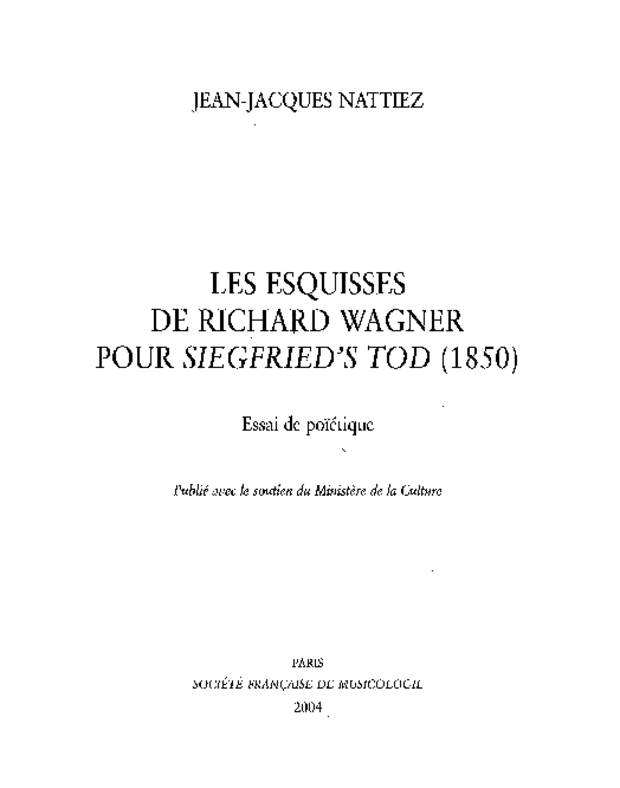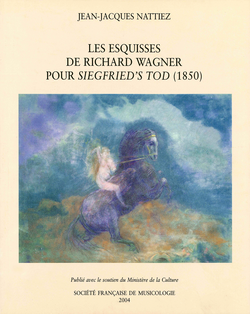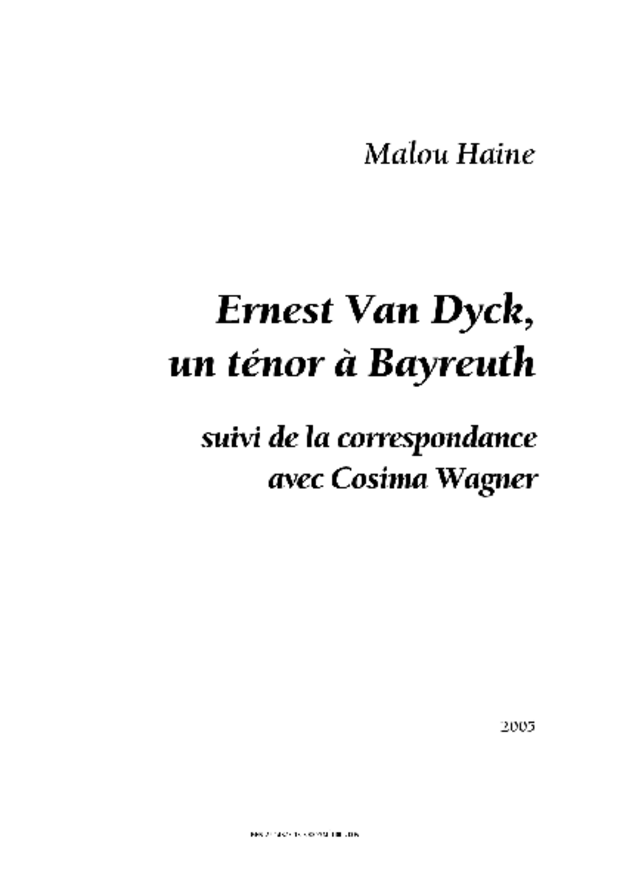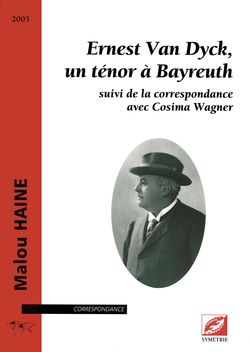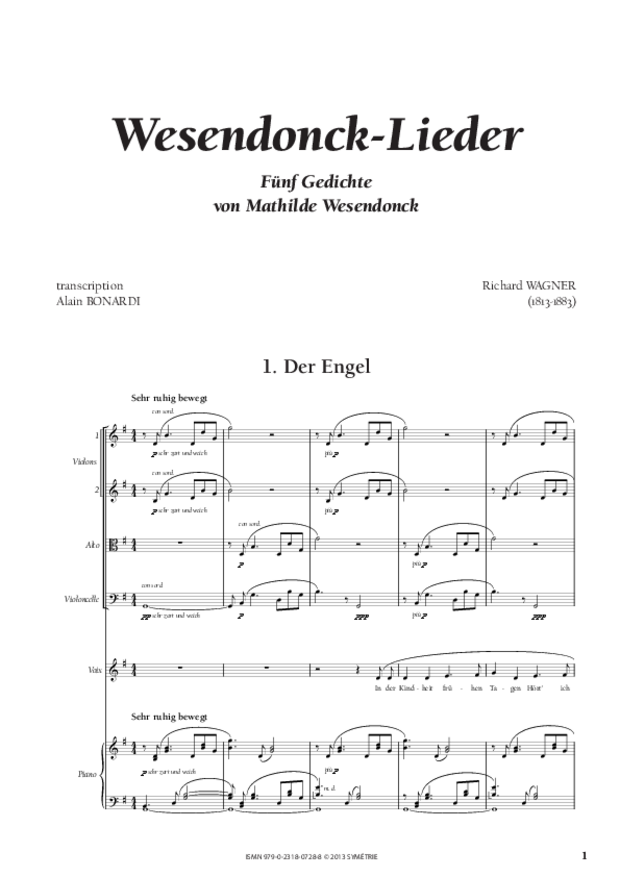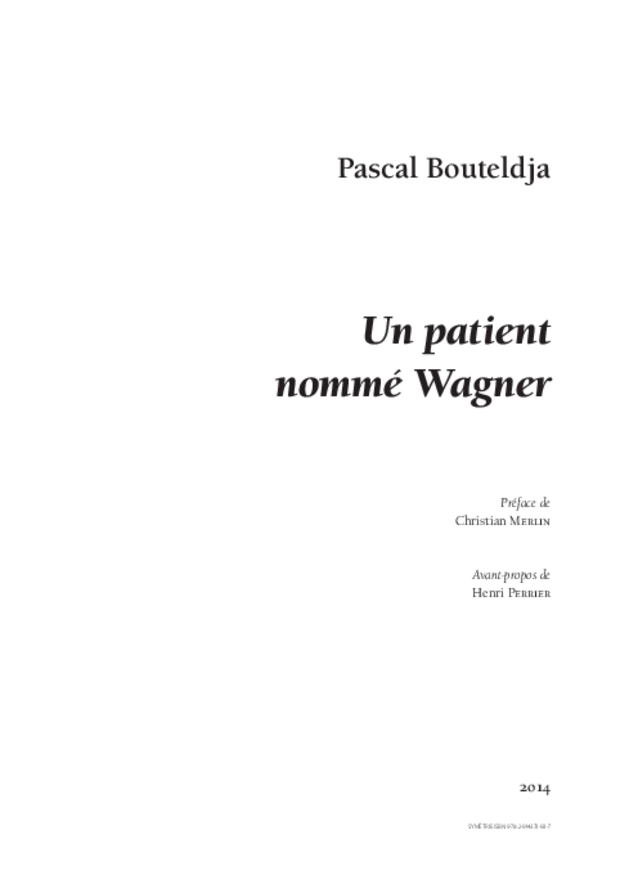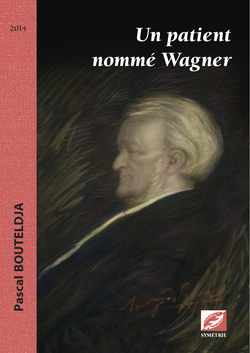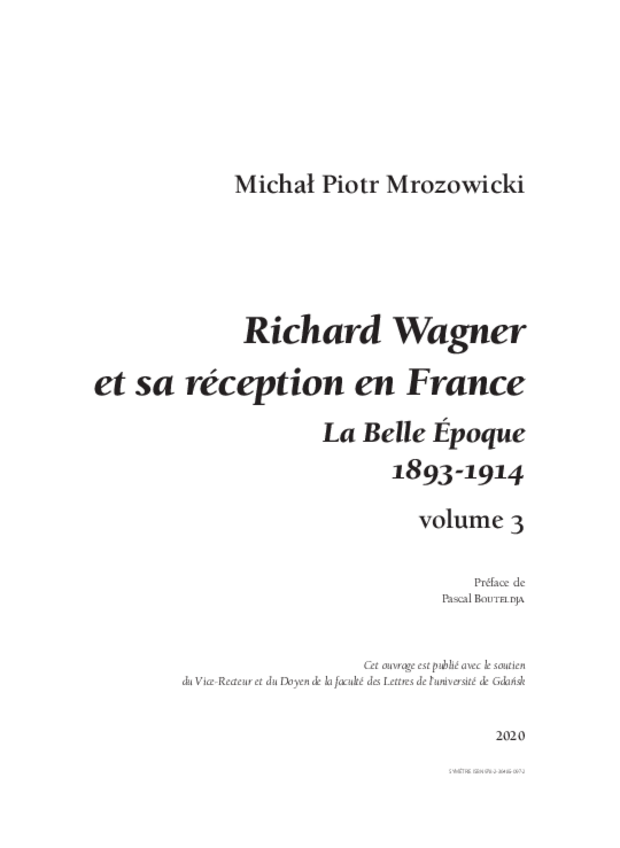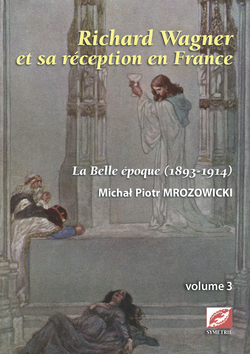The work, divided into two volumes, presents the evolution of French Wagnerism in the years 1883-1893, a movement that found its expression mainly in the activity of La Revue Wagnérienne. The first chapter is dominated by analyses of texts published in this journal, but also includes detailed information on “Wagnerian life outside the Revue Wagnérienne”, in other words, on Wagnerian publications by authors who are not part of Édouard Dujardin’s team. The second chapter, entitled “Les petits portraits de grands wagnériens” (Small portraits of great Wagnerians), consists of brief biographies of some of the great figures of Wagnerism at the time.
After studying and showing the merits of those who worked with varying degrees of perseverance – and sometimes well beyond this period – in favour of the German composer and the promotion of his work in France, the author describes the presence of Wagner’s work, increasingly important, in the decade 1883-1893, at Parisian concerts, as well as the long and winding road that Parisians travelled before accepting it enthusiastically in 1891, thirty years after the fall of Tannhäuser.
The description of Lohengrin‘s triumph at the Palais Garnier and its consequences occupies the major part of the second volume. Wagner’s Parisian triumph, twenty months later, was to be confirmed by the resounding success of another of the composer’s works. Finally, “En attendant La Chevauchée? ” is the title of an epilogue that describes “Wagnerian life” in France in the months and weeks leading up to the first Parisian (and French) performance of the first day of the ??Ring of the Nibelung tetralogy, the show that would mark the beginning of the Wagnerian “belle époque” in France.
These two volumes are part of a cycle devoted to the reception of Richard Wagner and his work in France. The third volume is entitled La Belle Époque (1893-1914).
Table of contents
- Avant-propos || 1 ||
- Introduction. La cérémonie des adieux || 7 ||
- part. Partie I : La plume
- Les anciens et les néophytes. Quelques remarques sur les ouvriers du wagnérisme || 53 ||
- Les petits portraits de grands wagnériens || 324 ||
- part. Partie II : La baguette
- Richard Wagner aux concert parisiens (1883-1893) || 669 ||
- La bataille de Lohengrin || 781 ||
- En attendant La Chevauchée || 1083 ||
- Annexe I : Comte Villiers de L’Isle d’Adam. À propos des Fêtes de Bayreuth et ses hypertextes || 1111 ||
- Annexe II : Les Maîtres chanteurs de Nuremberg au théâtre royal de La Monnaie à Bruxelles – le 7 mars 1885 || 1119 ||
- Annexe III : Le wagnérisme pictural en France || 1145 ||
- Bibliographie || 1171 ||
- Index des œuvres de Wagner || 1191 ||
- Index des œuvres || 1195 ||
- Index des personnes || 1209 ||
Press panorama
Récit qui se lit […] avec passion pour qui s’intéresse à ce sujet. Lequel méritait effectivement un bilan à la fois lucide et serein – une somme, en fait.
Pierre Flinois, L’Avant-Scène Opéra
Un ouvrage que tout wagnérophile se doit d’avoir dans sa bibliothèque.
Jean-Marcel Humbert, Forumopera.com
Deux volumes passionnants qui se lisent comme un roman en raison du sujet, de son contenu et de la qualité de l’écriture. Ces volumes intéresseront les wagnériens passionnés, mais aussi tout amateur de culture et d’histoire : ils ouvrent de larges perspectives sur la fin troublée du XIXe siècle.
Jean Lacroix, La Revue générale
